Added November 11, 2015.
I finished that painting I was talking about in this post! Love this picture.
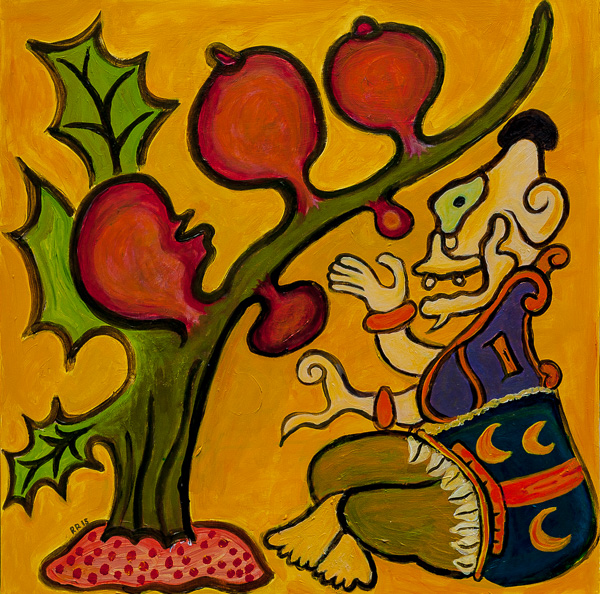
“Diego’s Hunhunahpu” acrylic on canvas, November, 2015, 36” x 36”. Click for a larger version of the painting.
As always, more info on my Paintings page.
And now back to the original November 3, 2015, post.
That new hip I got in March, 2015, didn’t take, that is, its cup never bonded with my pelvis bone. So day before yesterday, on Monday, October 26, I had my third artificial left hip implanted. There was the usual jump-cut in consciousness. I’m lying on the operating table with an IV in my arm, and then I’m waking up in bed in the recovery room. I couldn’t move my feet at first, as they’d given me a spinal block injection to paralyze the lower half of my body. I could hardly talk.
“Is the operation over?”
“Yes.”

And then I’m looking around the room, lying there for maybe 45 minutes, a large room with other patients, nothing very interesting to see, nothing alive except for the humans, just steel and white, cloth and plastic. Now and then a nurse. And then they wheeled me to my room, and Sylvia came in, and my life began again.
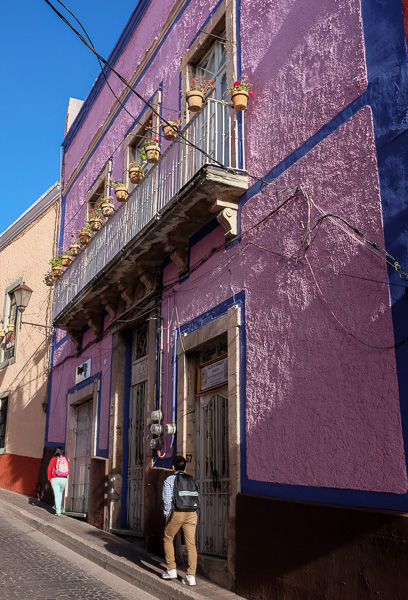
A hospital is the opposite of Guanajuato. Knowing this operation was coming up, I’ve been feeling kind of down for the last few months. The day on Route One with Isabel, and the four days in Mexico—those were breaks that gave me a much-needed lift. And Syvlia and I went to see The Magic Flute opera in SF the day before the operation, so uplifting.
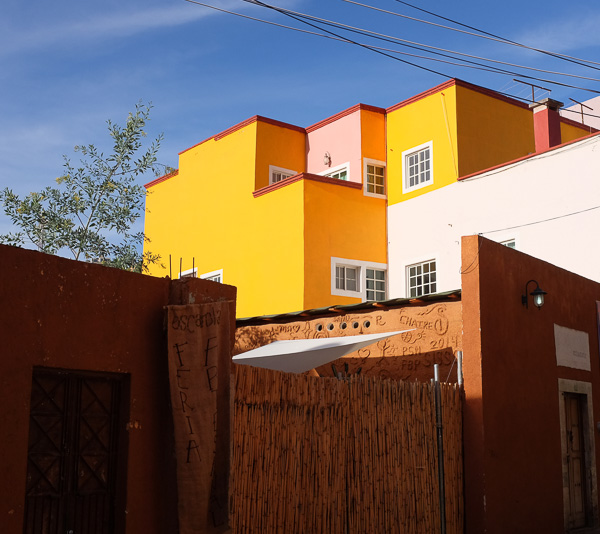
But here I am in the post-op present tense, venturing out once again into the psychic surf, wanting to get back on my board and ride some painting and writing waves.
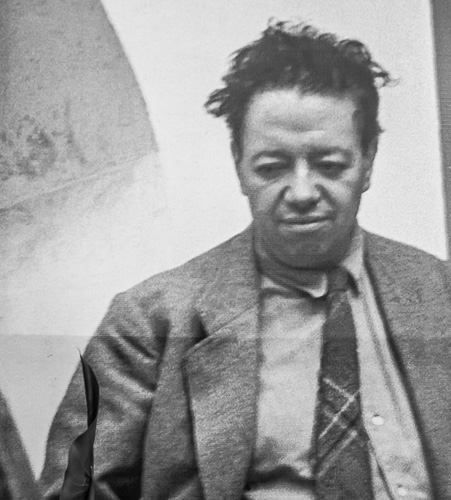
On my last day in Guanajuato, I toured Diego Rivera’s childhood home, right next to my hotel. They’ve made it into a museum with replica/reconstructed furniture, and a few of his smaller works.
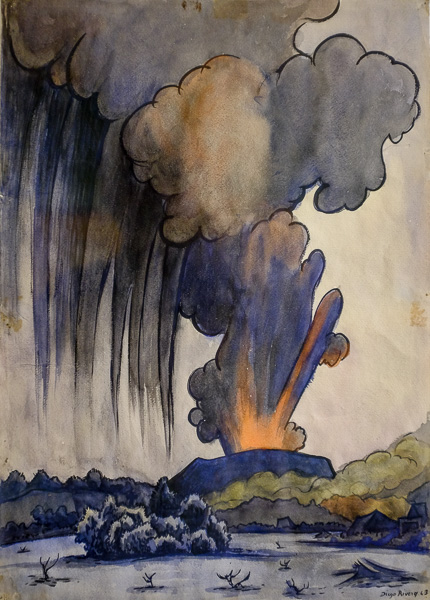
I hadn’t really grasped how great an artist Diego Rivera was—in the US he’s mostly known for his murals, which are wonderful, but he could do really lovely fast stuff at smaller scale. Like this one here is a 1943 painting of an exploding volcano called Paricutin—Diego was sent there as part of a journalism gig. There’d be no good way to get a photo, so they sent a painter. Wonderful brush strokes.
Maybe the most interesting works on display are drawn from a set of 24 watercolors that Diego made, intended for use as illustrations in an book based on the legends in the hieroglyphic Mayan codices, a book to be called Popol Vuh, never published, to have been edited by one John Weatherwax—I wonder if William Burroughs knew this guy, Bill was always talking about the Mayans and the codex.
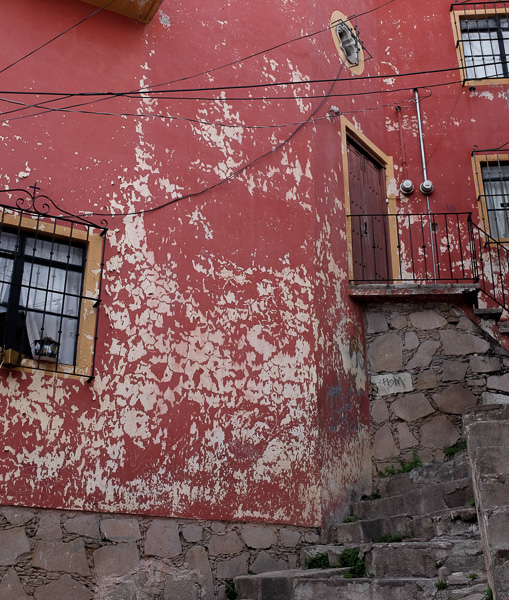
Re. the codices, in an amazingly evil act, the conquistadors and the Spanish priests burned most of them. Writing in July of 1562, Bishop Diego De Landa wrote:
“We found a large number of books in these [hieroglyphic] characters and, as they contained nothing in which were not to be seen as superstition and lies of the devil, we burned them all, which they [the Mexicans] regretted to an amazing degree, and which caused them much affliction.” Such codices were primary written records of Maya civilization…
Anyway, back to the good Diego, you can find the manuscripts for the book he was going to illustrate for this John Weatherwax guy, a 1930’s Communist pal, online in the Smithsonian collections. I get the impression the texts are more or less public domain at this point. It would be cool if some small press could finally publish the book with Diego’s illos.
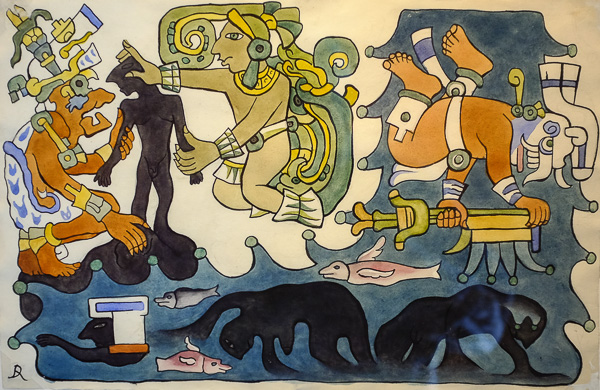
Wonderful, wonderful images by Diego, like alien cartoons. Mayan gods, yes! So gnarly. I’m going to work them into Million Mile Road Trip. A number of gods cooperated (or competed) on creating our cosmos and on creating human beings (shown above). Think of a Hollywood movie, or big budget videogame. Hundreds of people are involved, contributing to it. Graphic art, CG, makeup, costumes, sound, cinematography, casting, actors, and numerous directors. Not just one director. No boss, no top director, no head producer. Like some Hollywood movies will have a “second unit” filming stuff. And a universe emerges.
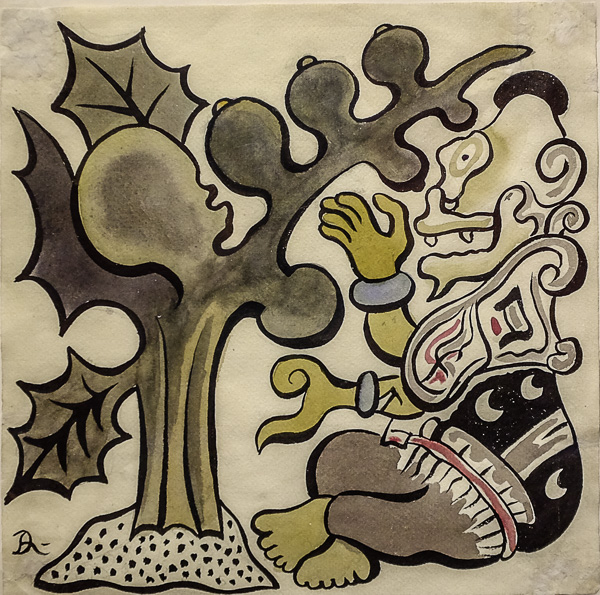
Here’s Hunhunahpu , the tonsured corn god, making humanoid shapes on this calabash(?) plant, including perhaps a copy of his head.
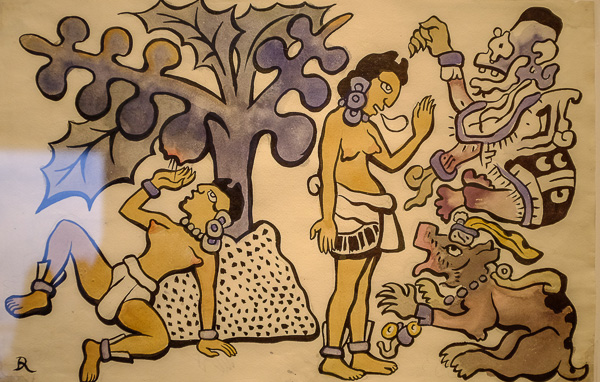
Later a woman lies under the bush and the head drips spit on her crotch and she gets pregnant, and I think bears twins, one of whom is just plain Hunahpu, with Hunhunahpu the dad. At this point I know next to nothing about the Mayan cosmogony.
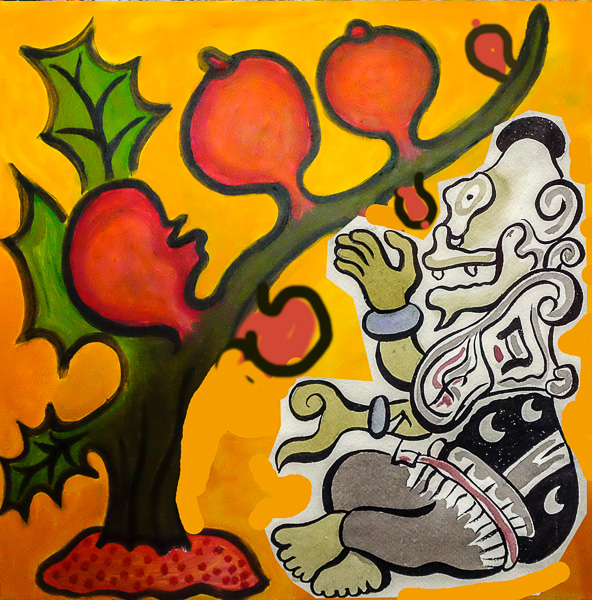
As part of my post-op physical and psychic rehab program, I’m working on a copy of that first Hunhunahpu painting. After three days in a daze, I kicked the oxy meds and went, more or less, back to being Rudy. And then I wanted to do something creative, and I wasn’t quite ready to write, so I started painting. I’m using acrylic paint instead of oil paint, as the clean-up is easier this way. And acrylic paint dries so fast that it’s easy to paint over things and revise. That’s a working mock-up shown above. The colored part is my painting thus far, and the Hunhuhahpu is just a collaged-in copy of Diego’s version that I still need to paint in. [You can see the finished version at the start of his post.]
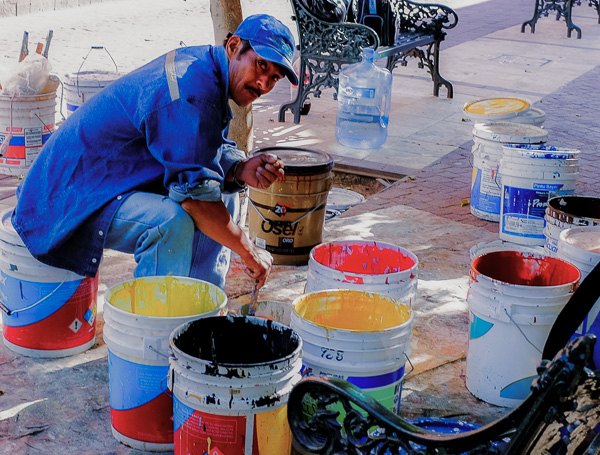
There’s a harsh, saturated, Mexican-wall-paint quality to the acrylic colors that I like.
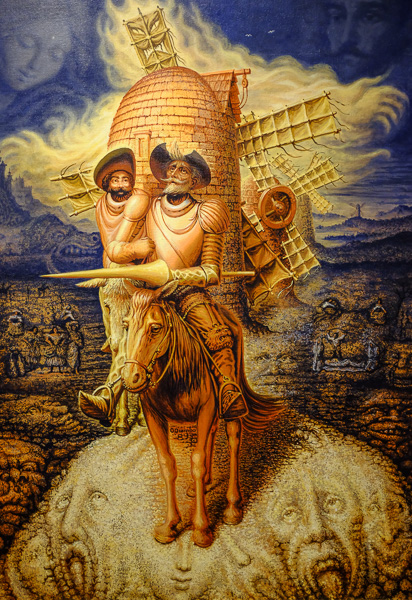
Cool composite painting of Don Quixote. Artist’s name is Trigos? (Correct me if wrong.) Click for a larger version of the painting.
The last touristic type site I saw in Guanajuato was a surprisingly interesting museum of paintings and statues of the character Don Quixote—from the Cervantes novel.
I’ve never managed to read much of the novel, so when I was home I sought out a couple of translations, and give it another shot, but to no avail. To me, the character Don Quixote is just an idiot.
But you could say there’s a sense in which Don Quixote stands for writers. His lance is like a pen. He’s surrounded by books at home—which is like having a manuscript you’re working on. He goes out on missions and gets everything wrong—because he’s overlaying his transreal novelistic notions upon the world. Tedious, long-winded, overbearing.
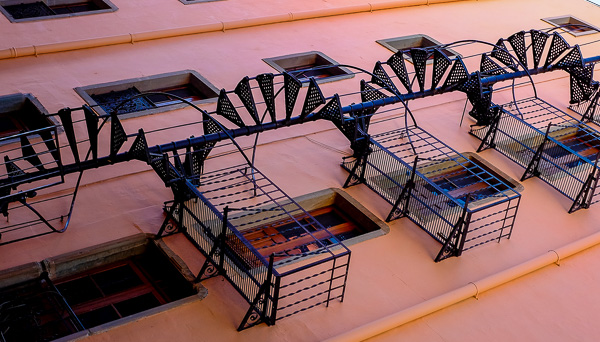
Out in the surf.









November 3rd, 2015 at 11:41 pm
The Popol Vuh texts are good, very readable stuff. I’ve got a 1962 German translation. Back in the 1700s there was a Padre Francisco Ximinez who saved those pre-columbian scripts from destruction. He hand-copied them and gave them back to the natives. Heroe! An edition with Rivera’s colourful pics would be great indeed.
November 18th, 2015 at 3:37 am
Hi Rudy
Sorry to hear of your hip troubles. Must be hard on you as a walkabout, bike friendly kind of guy. Hope you find resolution for your troubles soon. Many good wishes for your recovery.